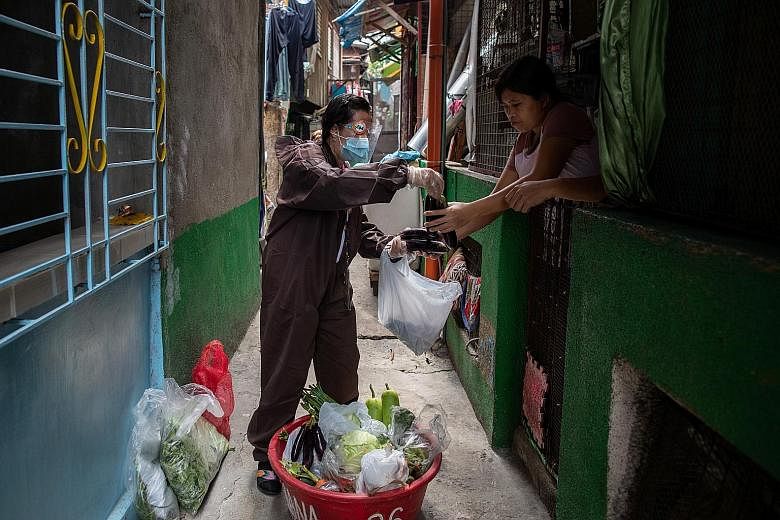The Philippines is now the new epicentre of the coronavirus pandemic in South-east Asia, even as it plunges into a recession with no hope of a swift recovery as a crippling lockdown continues to wipe out jobs and incomes.
The Health Ministry yesterday reported 3,561 new cases of Covid-19, raising the total to 119,460. It surpasses Indonesia's tally of 118,753, which till now had been the highest in South-east Asia.
However, the death toll in Indonesia stands at 5,521 against the Philippines' 2,150.
The Philippines now has the fourth-most number of cases in Asia, after India, Pakistan and Bangladesh. The latest figures came just hours after it was reported that the economy suffered its deepest slump on record in the second quarter.
The Philippines reached this grim milestone even though it had in place one of the strictest and longest lockdowns in the world.
President Rodrigo Duterte placed Metropolitan Manila and the rest of the main island of Luzon - home to about half of the country's population of over 107 million - under lockdown in mid-March to slow the spread of the virus.
Health officials said the strict shelter-at-home restrictions allowed the country to "bend the curve", with infections hovering at an average 200 to 500.
With cases seeming to have become manageable and hospitals freeing up more beds, Mr Duterte lifted the lockdown on June 1.
Since then, however, cases have soared. Over 75,000 cases were recorded in June and July alone. In recent days, hospitals have run out of beds as they are swamped with Covid-19 patients.
Last Saturday, some 80 groups representing 80,000 doctors and one million nurses said the Philippines was losing the fight against the disease. That forced Mr Duterte to put Metro Manila and four outlying provinces back under lockdown for at least two weeks starting from Tuesday.
Former health minister Manuel Dayrit said he was not surprised that the Philippines would be saddled with the most number of Covid-19 cases in the region.
"If you look at South-east Asia, what you need to understand is that we have to look at the readiness of their health systems, even pre-Covid," he said.
Vietnam and Thailand, for instance, doubled or tripled their investments in their health systems.
The Philippines, by comparison, had a "pretty obsolete" public health infrastructure when the coronavirus began sweeping across the globe, he added.
Earlier in the day, the statistics bureau reported that the country's gross domestic product (GDP) - the broadest measure of goods and services produced - shrank 16.5 per cent in the April-June quarter from a year earlier, the biggest contraction in 40 years.
GDP declined for a second consecutive quarter on a quarter-on-quarter basis, down 15.2 per cent, implying the economy was now in recession for the first time in 29 years.
National statistician Claire Dennis Mapa told reporters yesterday: "We're seeing these numbers because of the (two-month) lockdown (from mid-March)."
At least three million people lost their jobs during this period and government economists estimated that the lockdown cost the economy roughly 1.5 trillion pesos (S$42 billion).
At a news briefing yesterday, Economic Planning Secretary Karl Chua said that with infections surging in March, it was inevitable the economy would take a hit, adding: "Our country is facing its biggest crisis in nearly eight decades."
There is some hope. Manufacturing had begun to ease, from 39 per cent in April to 19 per cent in June, noted Finance Secretary Carlos Dominguez, but exports to China are growing - 2.8 per cent in June after shrinking 55 per cent in April.


